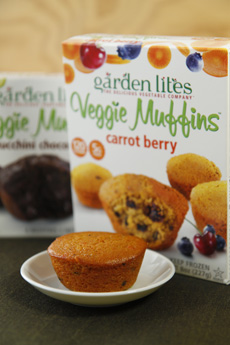TIP OF THE DAY: Broccoli Salad | ||||||
| ||||||
|
Permalink Comments off | ||||||
PRODUCT: Garden Lites Veggie Muffins | ||||||
| ||||||
|
Permalink Comments off | ||||||
NEWS: New Pork Cut & Beef Cut Names | ||||||||||||
| ||||||||||||
|
Permalink Comments off | ||||||||||||
What To Do With Green Chartreuse & The History Of Chartreuse | ||||||||||||
Chartreuse, pronounced shahr-TROOZ, is a pale green or yellow liqueur made from brandy and aromatic herbs. We prefer the original green Chartreuse, which has more complexity. Yellow chartreuse is a later recipe, lower in proof and a sweeter mix of herbs. Who invented Chartreuse? That information is lost to time. As the story goes, in 1605 François Hannibal d’Estrées, duc d’Estrées, a French diplomat, soldier, and Marshal of France to King Henry IV, presented the Carthusian monks at Vauvert, near Paris, with an alchemical manuscript. It contained a recipe for an “elixir of long life” (and it may have worked, since the duke reached the unusually old age of 97 [1573 to 1670]). The recipe eventually reached the religious order’s headquarters at the Grande Chartreuse monastery, north of Grenoble, in the Chartreuse Mountains in southeastern France. The formula, which was further enhanced in 1737 by Brother Gérome Maubec, is said to include 130 ingredients—herbs, plants, flowers, and other secret ingredients—in a wine alcohol base. We do know a few of them. The monks intended for their liqueur to be used as medicine, which was the common use of all spirits back in the day. The liqueur soon became popular, and in 1764 the monks adapted the elixir recipe to make what is now called the Elixir Végétal de la Grande Chartreuse. Life in Europe was unstable due to the ongoing shifting of power. In 1793, the Carthusian monks were expelled from France along with all other religious orders and the manufacture of Chartreuse ceased. A copy of the manuscript was made and kept at the monastery, but the original manuscript left in the possession of one of the monks. In the best cloak-and-dagger manner, on his way out of France, the monk carrying the recipe was arrested and sent to prison in Bordeaux. He was not searched and was able to secretly pass the manuscript to one of his friends, Dom Basile Nantas. He sold the manuscript to a pharmacist in Grenoble, a Monsieur Liotard. At the death of the pharmacist, his heirs returned the manuscript to the monks, who had returned to the monastery in 1816. In 1840, the monks developed a milder version called Green Chartreuse and a sweeter version called Yellow Chartreuse. The green “Liqueur de Santé” was the first liqueur made from the original recipe of the Elixir Végétal de la Grande Chartreuse. It was so popular that Father Garnier, an attorney and responsible for the liqueurs at the time, later decided to officially name it “Chartreuse Verte” and registered the “Chartreuse” mark in 1852. It is still produced and manufactured today by the Chartreux Fathers in their Aiguenoire distillery in Entre-Deux-Guiers (Isère – France). Oh no: The monks were again expelled from the monastery following a French law of 1903, and their real property, including the distillery, was confiscated by the government. The monks carried their secret recipe to their refuge in Tarragona, Catalonia, Spain, and began producing their liqueurs with the same Chartreuse label, but with an additional label that noted, “Liqueur fabriquée à Tarragone par Les Pères Chartreux (the liqueur is manufactured in Tarragona by the Carthusian Fathers). At the same time, the Compagnie Fermière de la Grande Chartreuse, a corporation in Voiron, France that had obtained the Chartreuse assets, produced a liqueur without the monks’ recipe, which they sold as Chartreuse. While this French corporation was acting legally in France, the monks successfully prevented the export of the liqueur to many other countries, since the order retained ownership of its foreign trademark registrations (largely because the recipe had been kept secret). One trademark dispute was litigated in the U.S., which the monks won. Sales at the French company were very poor, and by 1929, it faced bankruptcy. A group of local businessmen in Voiron bought all the shares at a low price and sent them as a gift to the monks in Tarragona. After regaining possession of the distillery (even with the expulsion order still in place), the Carthusian brothers returned to the monastery with the tacit approval of the French government and began to produce Chartreuse once again. When a mudslide destroyed the distillery in 1935, the French government assigned Army engineers to relocate and rebuild it at a location near Voiron where the monks had previously set up a distribution point. After World War II, the government lifted the expulsion order, making the Carthusian brothers once again legal French residents. In 2017 the distillery moved from Voiron to nearby Aiguenoire. Today, the liqueurs are produced using the herbal mixture prepared by the two monks at Grande Chartreuse. Isn’t this story worth buying a bottle of Green and a bottle of Yellow? Today there’s more than Green and Yellow. The line of herbaceous liqueurs is all natural, made with no artificial flavors or preservatives. All can be drunk straight or in cocktails. By the way, it was the liqueur that gave its name to the greenish-yellow color.
| ||||||||||||
|
Permalink Comments off | ||||||||||||
TOP PICK OF THE WEEK: Onion Crunch, The New Condiment Sensation | ||||||
| ||||||
|
Permalink Comments off | ||||||







